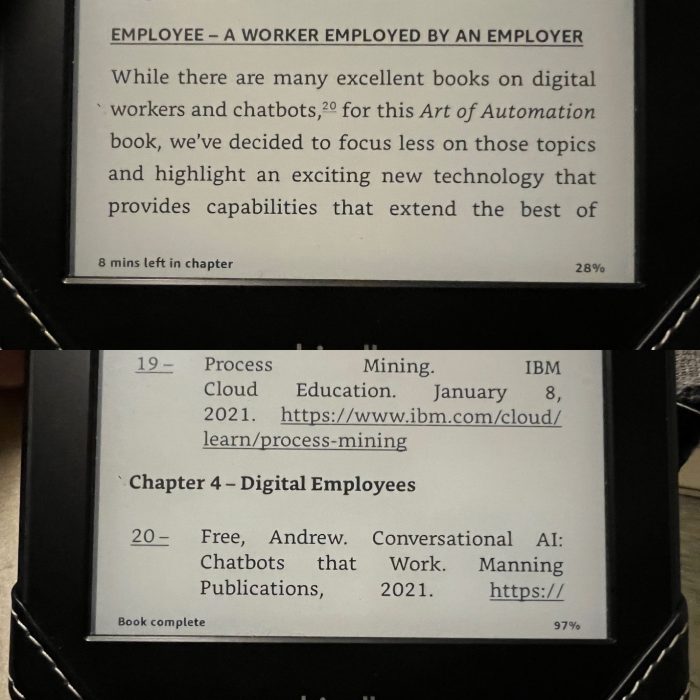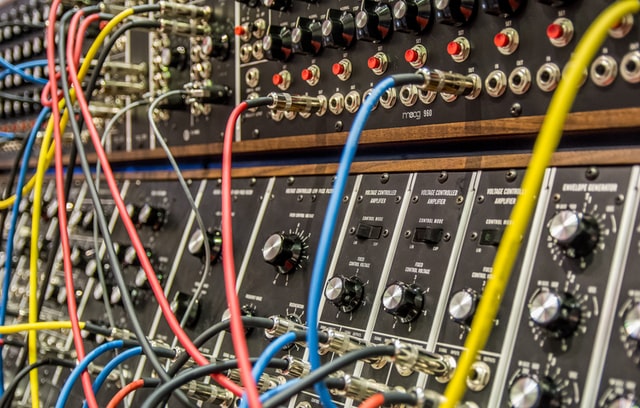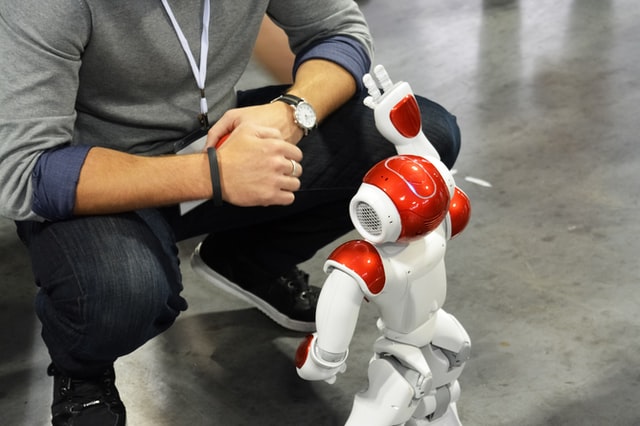
I don’t typically think of software and art in the same sentence. After reading Jerry Cuomo’s Art of Automation book, I’m going to think differently! Jerry Cuomo leads an all-star cast of contributors (“Gang of 7”) with diverse specialties and backgrounds. Nearly every chapter has a quotable insight.
The introductory framing is wonderful. Cuomo’s central thesis is that businesses have become computers that can be programmed. This statement alone was worth the book purchase. Further, Cuomo states (and his guests reiterate) “you can’t automate an enterprise unless that enterprise is ‘programmable’ through APIs.” This “fractal” view of an enterprise means that the same principles that apply to systems design, and even to programming, can also apply at even higher levels.

Even better – automation is not all or nothing. And if you don’t have APIs, there’s still hope for you. Many people think of automation as “task elimination”, but Cuomo et al argue for “task augmentation”. In many scenarios, we want a human involved in a task, but want to automate tedious tasks so the human can achieve better results. Claus Jensen notes that the question is not whether to use humans or AI automation, but to combine them, since they generally perform better as a team than as individuals. Cuomo and team repeatedly advocate for working in “bite-size chunks”, incrementally automating and delivering increased value.

The first automation deep-dive is chapter 2’s focus on Robotic Process Automation (RPA). RPA has a slightly cooler name than what it does – Allen Chan suggests we should call it Robotic Task Automation – since its unlikely that you can automate an entire process. There are lots of business processes that include repetitive copy-paste-manipulate. It may not be cost-effective to build fully API-based applications for these, but RPA can help lighten the load. If you find yourself repeatedly copying from one application and pasting into another – RPA might be for you.

Haley Davis’s chapter 3 suggests another birds-eye view of an enterprise, using process mining to perform a systemic review of an enterprise. (“Why are things going to hell in a handbasket around here?”) Process mining reminded me a lot of running a profiler on software code to figure out where bottlenecks are.
In chapter 10, Carol Poulsen suggests that RPA is a band-aid that you’ll need to eventually refactor. I agree with the sentiment, but also appreciate the book’s perspective that RPA is often a valuable incremental improvement on the status quo. The tension in these chapters shows the book’s greatest strength: diverse perspectives, and a refusal to work in false all-or-nothing dichotomies. The book even finds the middle ground on this topic: RPA and process mining help you find the places where you’ll eventually want to build APIs.

Chapter 4 has another brilliant insight, this time by Salman Sheikh, that a digital employee is “an employee first and digital second”. Sheikh explains that you need to focus on the digital employee’s role – the same way you would give your human employees a role. A digital employee often makes their human employee counterparts more productive. A wonderful use case for digital employees is bridging multiple applications, so a human can stay in one application to perform their work instead of jumping between applications.

Chapters 5 and 6 take a tour through automated document processing (ADP) and automated application performance monitoring (APM). Cuomo ties these together with a common thread: you can’t automate or fix that which you cannot see. ADP and APM support that mantra in different ways.
Perhaps my favorite chapter was the 7th, written by Rama Akkiraju, on AIOps. As a technologist, I wanted to inject this chapter directly into my veins! AIOps combines the best parts of AI and Ops to keep your systems running smoothly. In my career I’ve encountered lots of different systems: source control, ticketing systems, incident databases, operational logs, runbooks, and more. AIOps brings all these information sources together in exciting ways. Of course, you could use these solutions to reactively solve problems. But better yet, you can use them predict problems. Akkiraju describes a scenario where historical data is used to assess a change request. She stops just short of invoking a Clippy who asks you “Say, it looks like you’re about to do a risky deployment!”

Rob Nicholson delivers the 8th chapter, on APIs. Fully automating without API integration is difficult. API integration enables automation by allowing the enterprise to find and act on data. A cool feature coming out of IBM is App Connect’s “Smart Mapper” which uses ML/NLP and rules to suggest likely mappings between pairs of APIs. This would have saved me a lot of time as a young programmer!

Chapters 9 through 15 are transcriptions from Cuomo’s Art of Automation podcast where he interviews titans of industry. These were delightful tours through a variety of industries. I noted several insightful theses:
- Being digital is the precursor to automation. – Oscar Roque (Interac Corporation)
- Automation is incremental simplification – Lisa Seacat Deluca (IBM Weather Company)
- Don’t ask whether an AI or a doctor is better, they are almost always better together! – Claus Jensen (Memorial Sloan Kettering)
- Disrupt or be disrupted. – Carol Poulsen (Cooperators Group)

In conclusion, Art of Automation is jam-packed with insights, perspectives, and light-bulb-inducing moments. Cuomo and his “Gang of 7” have written a gem that will teach you things about automation that you never knew before. And you’ll have some fun learning!